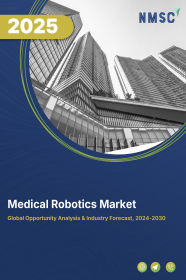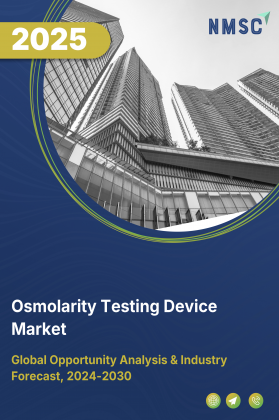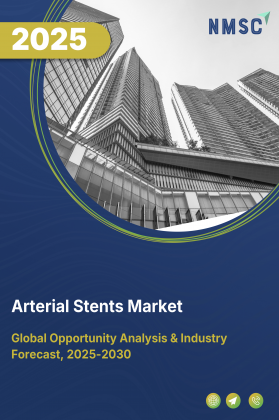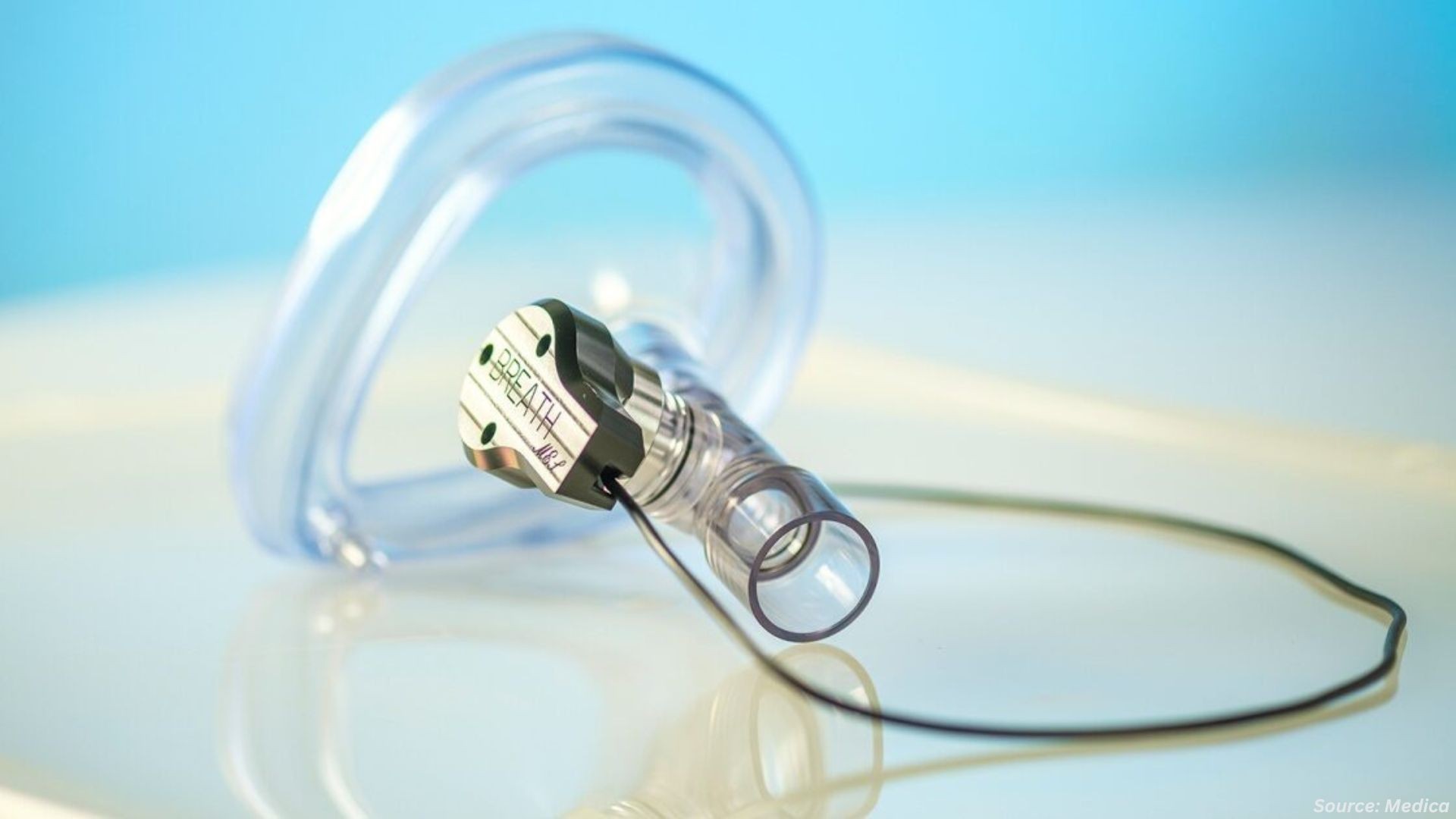
Medical Robotics Market by Product and Services (Instrument and Accessories, Robotic Systems, Services, and Consumables), by Application (General Surgery, Orthopedic Surgery, Neurosurgery, Gynecological Surgery, Urological Surgery, Oncological Surgery, Transoral Surgery, Physical Rehabilitation, Laparoscopy, Pharmacy Application and Other Applications), by End Users (Hospitals, Home Care Settings, and Other) - Global Opportunity Analysis and Industry Forecast, 2024– 2030
Industry: Healthcare | Publish Date: 13-Aug-2025 | No of Pages: 992 | No. of Tables: 779 | No. of Figures: 772 | Format: PDF | Report Code : HC481
Market Overview
The global Medical Robotics Market size was valued at USD 14.92 billion in 2023 and is predicted to reach USD 45.04 billion by 2030, with a CAGR of 17.1% from 2024 to 2030. The medical robotics market refers to the dynamic and rapidly evolving sector within the healthcare industry that involves the development, deployment, and utilization of robotic systems and technologies to enhance medical procedures, diagnosis, and overall patient care. These robotic systems are designed to assist healthcare professionals in performing surgical procedures with increased precision, efficiency, and minimally invasive techniques, ultimately improving patient outcomes.
Medical robotics encompass a wide range of applications, including robotic-assisted surgery, rehabilitation robotics, telepresence robots for remote healthcare, robotic prosthetics, and robotic exoskeletons, among others. These advanced technologies incorporate elements of artificial intelligence, machine learning, and real-time data analysis to augment the capabilities of healthcare providers and improve the accuracy and safety of medical interventions.
Increasing Popularity of Minimally Invasive Procedures (MIS) Boosts Market Growth
The increasing demand for medical robotics is related to the growing preference for minimally invasive procedures (MIS) in the healthcare industry. As both patients and healthcare providers seek alternatives to traditional open surgeries, medical robots have become crucial facilitators of MIS, consequently fueling the demand for their integration into surgical practices. The inherent capability of medical robots to operate through smaller incisions with enhanced precision and dexterity significantly contributes to the success and widespread adoption of minimally invasive interventions.
Medical robotics offers surgeons advanced tools and real-time imaging capabilities, thereby augmenting their ability to navigate confined spaces within the body. This, in turn, facilitates intricate procedures with reduced trauma to surrounding tissues. The transformative impact of medical robotics on surgical practices results in faster recovery times and shorter hospital stays, reinforcing the essential role of these technologies in meeting the increasing demand for minimally invasive procedures in modern healthcare. As the popularity of MIS continues to rise, the medical robotics market experiences significant growth as these innovative systems are instrumental in enhancing patient outcomes and advancing the overall efficiency of medical interventions.
Rising Government Initiatives Related to Technological Advancement in Healthcare
Governments around the world are actively contributing to the growth of the medical robotics market by implementing comprehensive strategies within the healthcare industry. Through substantial investments in research and development, governments are promoting the exploration of innovative solutions in medical robotics, leading to technological advancements that address the ever-changing healthcare landscape. For instance, in October 2021, the European Investment Bank (EIB) invested USD 17.4 million in Quantum Surgical for the commercial launch of its Epione medical robot that was used for the minimally invasive liver treatment of cancer.
Moreover, the increasing government investment in the healthcare industry serves as a significant catalyst for transformative progress in healthcare services and infrastructure. The increased financial commitment acts as a driving force for innovation, research, and technological advancements. The infusion of financial resources has the potential to accelerate the adoption of cutting-edge medical technologies, including advanced surgical robots, thereby enhancing the overall quality of healthcare delivery.
As an example, China released a development plan for the medical equipment sector as part of its 14th Five-Year Plan (2021-2025). The country aims to accelerate the integration of information technology into the medical equipment industry by 2025, with a specific focus on the development of medical robots and digital health platforms. Moreover, the plan outlines specific measures to enhance medical equipment to bolster community-based elderly care, aligning proactively with the national strategy addressing population aging.
High Initial Costs Restrain Market Growth
The high initial cost of acquiring and implementing medical robotics systems constitutes a significant restraint on the market's growth. The procurement expenses associated with purchasing advanced robotic systems, coupled with the need for comprehensive training programs for healthcare professionals and infrastructure adaptations, contribute to the formidable financial barrier. Healthcare institutions, operating within constrained budgets find the substantial upfront investment challenging which hinders the overall growth of the market.
The Integration of AI in Medical Robotics Creates Future Opportunity
Integrating artificial intelligence (AI) in medical robotics brings transformative capabilities to medical robotic systems, enhancing their decision-making, adaptability, and overall performance. Machine learning algorithms enable robots to analyze vast amounts of medical data, improving diagnostic accuracy and enabling more personalized treatment plans.
Moreover, the integration of AI in medical robotics has the potential to streamline healthcare processes and enhance patient outcomes. AI-powered robotic systems can assist healthcare professionals by automating routine tasks, allowing them to focus on more complex aspects of patient care. This ongoing convergence of AI and medical robotics presents a pathway toward future advancements, promising innovative solutions, and further optimization of healthcare practices.
For instance, in September 2023, US Medical Innovations (USMI) and the Jerome Canady Research Institute for Advanced and Biological Technological Sciences (JCRI-ABTS) launched the new Canady Robotic AI Surgical System. It is claimed to be the world’s first artificial intelligence (AI) robotic system that generates cold atmospheric plasma (CAP), and a three-dimensional non-contact bioelectric pulse electromagnetic field.
North America Dominates the Medical Robotics Market
The expansion of the medical robotics market is propelled by the active involvement of major industry leaders, such as Johnson & Johnson, Intuitive Surgical, iRobot Corporation, Zimmer Biomet Holdings, Inc., and others. These global giants are implementing strategic measures to enlarge their market presence and are heavily investing in research and development initiatives, thereby playing a pivotal role in the substantial growth of the medical robotics sector.
A noteworthy example of this trend is evident in August 2021, when Zimmer Biomet Holdings, Inc., a renowned global medical technology leader received FDA 510(k) clearance for the ROSA Hip System, designed for robotically-assisted direct anterior total hip replacement. This marked the introduction of the fourth robotic system by Zimmer Biomet, augmenting the comprehensive ROSA Robotics portfolio. This portfolio encompasses the ROSA Knee System for total knee arthroplasty, ROSA Partial Knee System for partial knee arthroplasty, and ROSA ONE for neurosurgical and spine procedures.
Additionally, the market growth is further propelled by the proactive initiatives taken by key players in the robotic-assisted surgery domain, particularly in Canada. An illustrative instance is the product launch by Medtronic Canada ULC in October 2021, wherein the Mazor X System for robotic-guided spine surgery was introduced. This innovative system employs advanced 3D planning software to assist surgeons in precise placement of screws and other implants. The Mazor platform, with its three-dimensional capabilities, enables surgeons to rapidly visualize anatomical structures and spinal features, contributing significantly to the overall expansion of the medical robotics market.
Europe is Expected to Show Substantial Growth in the Medical Robotics Market
The surge in demand for medical robotics in Europe can be attributed to the incorporation of advanced technologies, including robot-based surgery, which offers advantages such as smaller incisions, reduced blood loss, and accelerated recovery times compared to traditional open surgery methods.
A notable illustration of this trend is evident in the introduction of the Versius Surgical Robotic System by CMR Surgical in Germany in February 2021. This surgical robot, specifically designed for minimally invasive surgery, aims to be both affordable and flexible, intending to enhance accessibility to robotic surgery for hospitals and surgeons which further contributes to the growth of the market in Germany.
Furthermore, various prominent universities and organizations across Europe are actively working to integrate robot-assisted surgery into hospitals, which further contributes towards the market growth. For instance, in September 2020, Manchester University NHS Foundation Trust (MFT) initiated its surgical robotics program, incorporating CMR Surgical's Versius robot at Manchester Royal Infirmary (MRI) hospital in the UK.
This marked a significant milestone as the Versius robot became the first surgical robot utilized for minimal access surgery at the hospital. Initially employed for colorectal cancer surgery, the implementation of robotic systems in such medical institutions showcases a broader trend of increasing efforts to integrate robot-assisted surgery into healthcare practices across the continent. This collective endeavor contributes to the overall growth and adoption of medical robotics in Europe.
Competitive Landscape
Several market players operating in the Medical Robotics market include Medtronic Plc, Smith and Nephew, Omnicell Inc., Accuray incorporated, iRobot Corporation, ARxIUM, Renishaw Plc, CMR Surgical, BD Rowa, Siemens Healthineers AG, Zimmer Biomet holdings, Inc., Intuitive Surgical, Stryker Corporation, Johnson & Johnson and Teladoc Health and others are provided in the Medical Robotics market report.
For instance, in September 2023, Accuray Incorporated received approval from the Japanese Ministry of Health, Labor, and Welfare (Shonin) to market the CyberKnife Robotic Radiosurgery System for treating trigeminal neuralgia (TN) in Japan. The CyberKnife system offers a high-precision radiosurgery treatment, administered in a single outpatient procedure.
Also, in October 2022, Medtronic plc achieved major milestones in the medical robotics market with significant regulatory approvals for its Hugo robotic-assisted surgery system. These include CE Mark clearance for general surgery, a Health Canada license for general laparoscopic surgery, and approval from Japan's Ministry of Health, Labor, and Welfare for urological and gynecological indications. This highlights Medtronic's commitment to advancing medical robotics and enhancing healthcare solutions worldwide.
In addition, in November 2021, Smith+Nephew, the global medical technology company, introduced the CORI handheld robotics system, a cutting-edge solution designed for both total and partial knee arthroplasties. The CORI system stands out as a compact and fully mobile5 solution, integrating a 3-D intra-operative imaging system alongside an advanced robotic sculpting tool.
Medical Robotics Market Key Segments
By Product & Services
-
Instrument and Accessories
-
Robotic Systems
-
Surgical Robotic Systems
-
Soft Tissue Surgeries
-
Hard Tissue Surgeries
-
Micro Surgeries
-
-
Logistics/Handling Robotic Systems
-
Rehabilitation Robotic Systems
-
Therapeutic Robotic Systems
-
Assistive Robotic Systems
-
Exoskeleton Robotic Systems
-
Other Rehabilitation Robotic Systems
-
-
Non-invasive Radio Surgery Robotic Systems
-
Diagnostic and Imaging Robotic Systems
-
Telemedicine Robotic Systems
-
Other Robotic Systems
-
-
Services
-
Consumables
By Application
-
General Surgery
-
Orthopedic Surgery
-
Neurosurgery
-
Gynecological Surgery
-
Urological Surgery
-
Oncological Surgery
-
Transoral Surgery
-
Laparoscopy
-
Pharmacy Applications
-
Physical Rehabilitation
-
Other Applications
By End User
-
Hospitals
-
Home Care Settings
-
Ambulatory Surgery Centers
-
Rehabilitation Centers
-
Other End-Users
By Region
-
North America
-
The U.S.
-
Canada
-
Mexico
-
- Europe
-
UK
-
Germany
-
France
-
Spain
-
Italy
-
Sweden
-
Russia
-
Netherland
-
Belgium
-
Rest of Europe
-
- Asia-Pacific
-
China
-
Japan
-
India
-
Australia
-
South Korea
-
Indonesia
-
Singapore
-
Malaysia
-
Rest of Asia Pacific
-
-
RoW
-
Latin America
-
Middle East
-
Africa
-
REPORT SCOPE AND SEGMENTATION:
|
Parameters |
Details |
|
Market Size in 2023 |
USD 14.92 Billion |
|
Revenue Forecast in 2030 |
USD 45.04 Billion |
|
Growth Rate |
CAGR of 17.1 % from 2024 to 2030 |
|
Analysis Period |
2023–2030 |
|
Base Year Considered |
2023 |
|
Forecast Period |
2024–2030 |
|
Market Size Estimation |
Billion (USD) |
|
Growth Factors |
Increasing popularity of Minimally Invasive Procedures (MIS) Surging Government initiatives |
|
Countries Covered |
28 |
|
Companies Profiled |
15 |
|
Market Share |
Available for 10 companies |
|
Customization Scope |
Free customization (equivalent up to 80 working hours of analysts) after purchase. Addition or alteration to country, regional, and segment scope. |
|
Pricing and Purchase Options |
Avail customized purchase options to meet your exact research needs. |
Key Players
-
Medtronic Plc
-
Smith and Nephew
-
Omnicell Inc.
-
Accuray incorporated
-
iRobot Corporation
-
ARxIUM
-
Renishaw Plc
-
CMR Surgical
-
BD Rowa
-
Siemens Healthineers AG
-
Zimmer Biomet Holdings, Inc.
-
Intuitive Surgical
-
Stryker Corporation
-
Johnson & Johnson
-
Teladoc Health




















 Speak to Our Analyst
Speak to Our Analyst

























